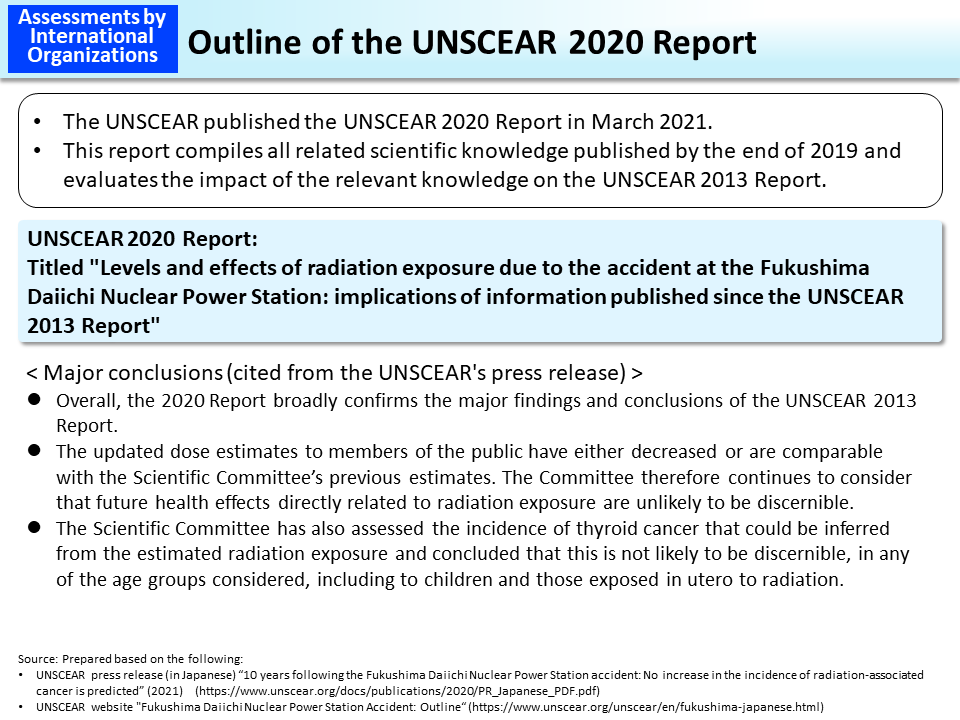Outline of the UNSCEAR 2020 Report
The UNSCEAR 2020 Report aims to compile all related scientific knowledge published by the end of 2019 (scientific knowledge concerning levels and effects of radiation exposure due to the accident at the Fukushima Daiichi Nuclear Power Station) and evaluate the impact of the relevant knowledge on the UNSCEAR 2013 Report. The UNSCEAR published this report in March 2021 and concluded that “overall, the 2020 Report broadly confirms the major findings and conclusions of the UNSCEAR 2013 Report.”
In this report, the UNSCEAR conducted improved model calculations based on additional observation data and more comprehensive knowledge on Japanese people’s actual diet and behavior, and reviewed its dose assessments. As a result, the UNSCEAR concluded that “dose estimates to members of the public have either decreased or are comparable with the Scientific Committee’s previous estimates,” and maintained its view that “future health effects directly related to radiation exposure are unlikely to be discernible.” In the report, the UNSCEAR assessed the incidence of thyroid cancer that can be inferred from the estimated exposure and stated as follows.
- It is concluded that thyroid cancer incidence is unlikely to be discernible in any age group of the subjects including children and those who were exposed in utero.
- In light of the evidence published so far, the UNSCEAR considers that the reason for a substantial number of thyroid cancers detected among exposed children (in comparison with the prediction) is not associated with radiation exposure, but rather a result of the application of highly sensitive ultrasound screening procedures, merely revealing the prevalence of thyroid abnormalities in the population not previously recognized.
The report also mentions that “in the general public, there has been no credible evidence of excess congenital anomalies, stillbirths, preterm deliveries or low birthweights related to radiation exposure.”
- Included in this reference material on March 31, 2022

